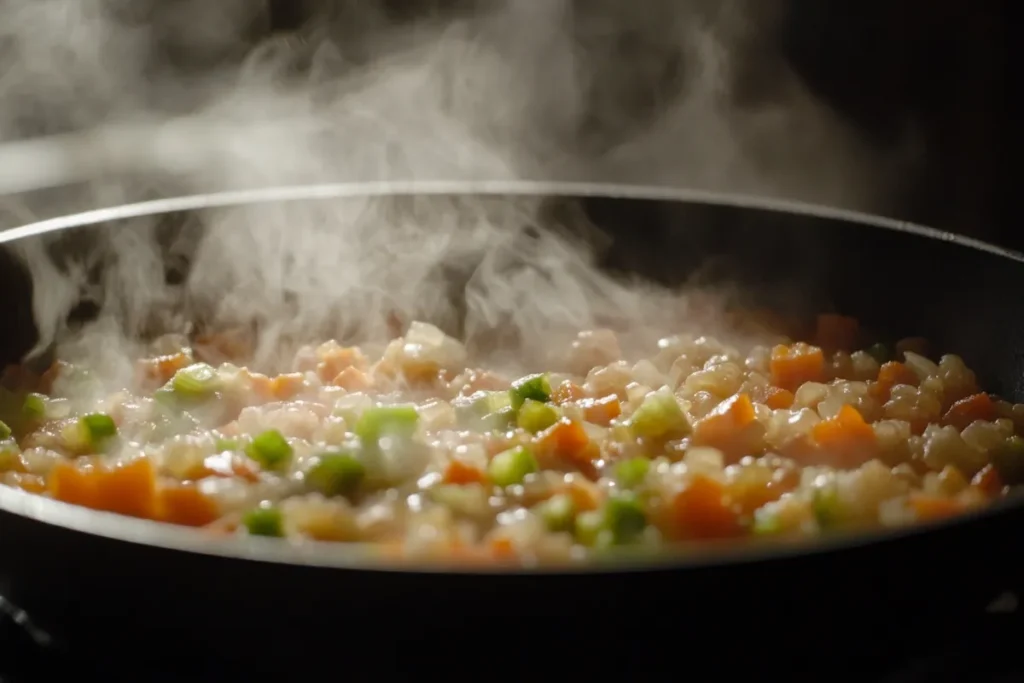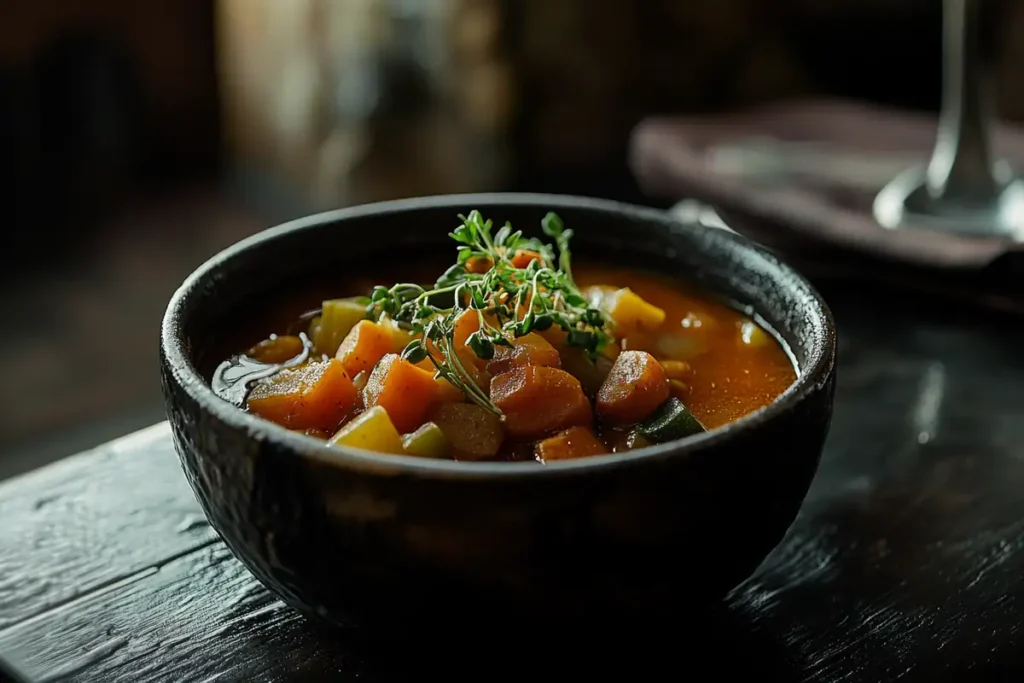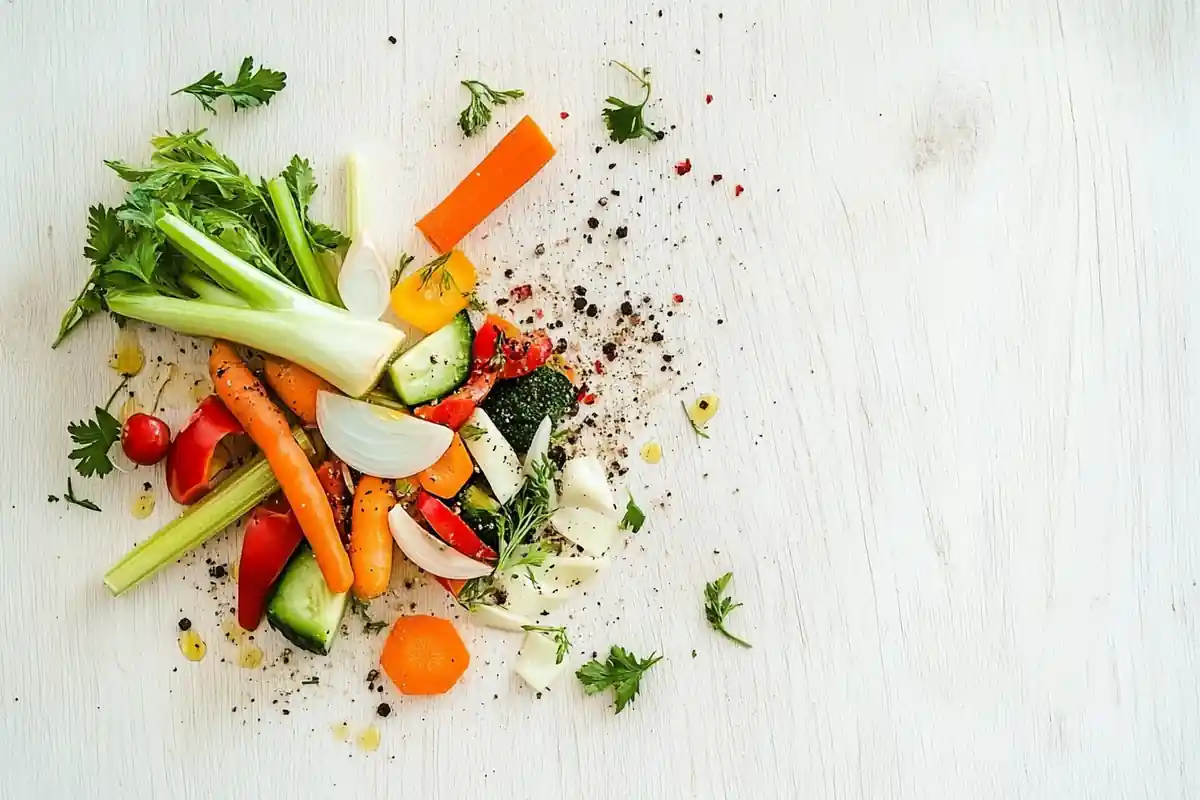Soup vegetables form the heart of any great bowl. This article will explore their role. We’ll cover common types. We’ll also discuss how to use them to enhance your soups.
Table of contents
- What Do You Call Soup Vegetables? The Foundation of Flavor
- Preparing Soup Vegetables: A Step-by-Step Guide
- Soup Styles and Vegetable Choices: Different Approaches
- Going Beyond the Basics: Exploring Unique Soup Vegetables
- Maximizing the Flavor of Your Soup Vegetables
- Soup Vegetable Combinations: Classic and Creative
- Cooking Tips for Soup Vegetables: A Few Key Things to Remember
- The Heart of the Bowl: A Final Thought on Soup Vegetables
- Frequently Asked Questions
What Do You Call Soup Vegetables? The Foundation of Flavor
When you think of a great soup, vegetables are often the first thing that comes to mind. But these aren’t just any veggies. These are the ones that build the flavor base. So, what do you call soup vegetables? There isn’t a single definitive name. People often refer to them as soup vegetables. They might also call them soup veggies. Some even use the term aromatics. Essentially, these are the vegetables chosen to create amazing broth and soup. They are the flavors that give the soup depth and complexity. They’re the foundation upon which the entire dish is built. Therefore, understanding their role is key to making great soup.
Common Types of Soup Veggies
Many vegetables can be used in a soup. However, some are more commonly used than others. Here are a few vegetable staples you will often see in soup recipes:
- Onions: These are essential for a savory base. They are often the first vegetable to go into the pot. They release a rich, deep flavor as they cook.
- Carrots: These add a touch of natural sweetness. They also provide color and important nutrients. They are mild and work well with other flavors.
- Celery: This adds a mild, earthy taste. It also brings a bit of texture before it softens. It complements both the onion and the carrot.
- Garlic: This is a very popular flavor enhancer. Its sharp, pungent flavor mellows when it is cooked. It adds a wonderful depth to many soups.
- Potatoes: These add heartiness to the soup. They also help to thicken it naturally. They can make a soup feel more substantial.
- Leeks: These are a mild relative of onions. They provide a subtle onion-like flavor. They are often used in French cuisine.
- Tomatoes: They add acidity and a rich, savory flavor. They can be used fresh or canned. They work well in many kinds of soups.
- Mushrooms: They add an earthy umami flavor. They also give a nice texture to many soups. They pair well with many other vegetables.
- Bell Peppers: They come in a variety of colors. They add sweetness and a bit of crunch. They can be used in many different cuisines.
The Importance of Essential Soup Components
Vegetables in soup are more than just filler. They release flavor as they cook. They also provide key nutrients. These veggies create the core taste of the dish. Using a good mix of vegetables will make a world of difference. Each vegetable brings its own unique flavor. Therefore, choosing them with care is important.
Mirepoix: A Cornerstone of Soup Vegetables
You might have come across the term mirepoix. This is a French culinary term. It refers to a specific combination of vegetables. These vegetables include:
- Onions
- Carrots
- Celery
This trio is the foundation for many soups and stews. Indeed, it’s used across the globe. It’s a simple combination. Yet, it can build complex flavors. The flavors complement each other. Together, they enhance the overall taste.
Preparing Soup Vegetables: A Step-by-Step Guide

Mirepoix sautéing for a flavor-rich soup base.
Preparing vegetables for soup is simple. The goal is to have them ready for cooking. Here’s a basic guide:
Washing and Peeling Your Veggies
Begin by washing all your vegetables thoroughly. Remove any dirt or debris. Then, peel them, if necessary. Peeling is optional. It depends on your personal preference and the type of vegetable.
Cutting Techniques for Soup Vegetables
You can cut vegetables into different shapes and sizes. However, for even cooking, it is best to cut them to similar sizes. Small dice are common for sautéing. Larger chunks are good for heartier soups. The way you cut vegetables can affect how they cook.
Sautéing for Enhanced Flavor in Vegetable Soups
Many recipes start by sautéing the vegetables in a little bit of oil or butter. This step is crucial. It enhances the flavor of the vegetables. Sautéing also helps to develop a richer base. The vegetables caramelize. This brings out their natural sugars.
When To Add Veggies for the Best Results
The timing for adding each vegetable is important. Some cook faster than others. Heartier vegetables, like potatoes, often go in first. Tender vegetables, like spinach, usually go in later. This ensures they don’t become overcooked. Thus, it’s essential to add them at the right time. This will help each vegetable to shine.
Soup Styles and Vegetable Choices: Different Approaches

A warm and comforting bowl of vegetable soup.
The way you use vegetables in soup depends on the style of soup you’re making. There are different approaches.
Pureed Soups: Smooth Vegetable Creations
Pureed soups feature vegetables that are cooked until very soft. They are then blended into a smooth texture. Examples include butternut squash and tomato soup. The vegetables are completely broken down. This creates a creamy consistency. Accordingly, the texture is the primary focus here.
Brothy Soups: Featuring Chunks of Vegetables
Brothy soups usually have larger pieces of vegetables. They are often cooked until tender-crisp. For example, a classic chicken noodle soup would have pieces of carrots and celery. These are cooked through but still have a little bite. This method provides a pleasant textural contrast.
Chunky Soups: A Hearty Vegetable Medley
Chunky soups are known for their robust nature. They contain a variety of vegetables, cut into sizable pieces. These include beans, potatoes, and root vegetables. Consequently, every spoonful contains a mix of different flavors and textures. This makes the soup hearty and filling.
Chunky Soups: A Hearty Vegetable Medley
Creamy soups might include vegetables that are pureed. However, they are then enriched with cream or milk. This makes them smooth and decadent. The vegetables provide a base. The creaminess gives it a luxurious mouthfeel.
Going Beyond the Basics: Exploring Unique Soup Vegetables
While classic vegetables are always good, there’s much more to explore. Many vegetables can work well in soups.
Root Vegetables: Earthy Flavors
Root vegetables, like parsnips and turnips, add earthy flavors to soups. They are hearty and hold up well. They can also be roasted before adding for extra depth.
Leafy Greens: Nutrient Boost
Leafy greens like kale and spinach can be great additions. Add them toward the end of cooking. This keeps their texture and color vibrant. They also add a good dose of nutrients.
Uncommon Options
Don’t be afraid to experiment with less common options. Try different squashes, mushrooms, or even bell peppers. Indeed, each one can contribute its own unique taste and texture. Additionally, consider adding things like artichoke hearts, eggplant, or even asparagus.
Adding Dried Beans and Legumes
Dried beans and legumes also make great additions. They add fiber and protein. Furthermore, they thicken the soup. Specifically, lentils, chickpeas, and black beans work really well in a variety of different kinds of soups.
Maximizing the Flavor of Your Soup Vegetables
Maximizing the flavor of soup vegetables involves understanding each vegetable’s role and how to treat them.
Seasonal Selections
Using vegetables that are in season is always a good idea. They tend to be the freshest. They also have the best flavor. Therefore, try to buy vegetables that are in season in your area. This will significantly improve the overall taste of your soup.
Quality Matters
Fresh, high-quality vegetables make a noticeable difference. They offer a greater depth of flavor and more nutrients. Unquestionably, the quality of your vegetables is the single most important factor when making great soup.
Utilizing Leftovers
Leftover cooked vegetables can be a great addition to soups. They already have a cooked flavor profile. They can blend into a soup seamlessly. This is also a fantastic way to reduce food waste. Moreover, you can freeze extra vegetables and add them to the soup later.
Roasting Vegetables for More Flavor
Roasting vegetables before adding them to the soup can enhance their flavor. The roasting process brings out the natural sweetness and caramelization. This is particularly good for root vegetables like squash and potatoes.
Soup Vegetable Combinations: Classic and Creative
Experimenting with different combinations can help you discover your favorite flavors. The possibilities are truly endless.
Classic Pairings
Some vegetables just seem to naturally complement each other. For example, carrots and peas are a classic pairing that works in many kinds of soups. Similarly, potato and leek is a popular combination. It provides a creamy texture and mild flavor.
Bold Combinations
Don’t be afraid to mix things up. Specifically, try roasting bell peppers with corn for a vibrant, smoky flavor. You can also try combining eggplant, zucchini, and tomatoes for a Mediterranean-style flavor. The best part is that you can experiment to find out what you like the most.
Herbs and Spices
Herbs and spices pair really well with soup vegetables. Therefore, try adding fresh or dried herbs to your soup. This will enhance the flavor profile. For instance, thyme and rosemary pair well with root vegetables. Also, spices like cumin and coriander add a warmth that complements many soups.
Adding Acidic Flavors
Don’t forget the acidic elements. A squeeze of lemon juice or a splash of vinegar can help brighten up the flavors. It also helps to balance the richness of the soup. Further, tomatoes themselves add acidity to a soup.
Cooking Tips for Soup Vegetables: A Few Key Things to Remember
Cooking with soup vegetables is easy. A few simple tips can help you get great results.
Avoiding Overcooking
Avoid overcooking the vegetables. Overcooked vegetables can become mushy. They can also lose some of their flavor. However, if you cook them until they are tender, but they still have a little bite, they will retain their flavor and texture.
Seasoning Your Soup
Season your soup as it cooks. Salt and pepper are must-haves. Moreover, don’t be afraid to add other spices or herbs. Taste as you go and adjust to your preference. Specifically, smoked paprika can add a smoky flavor and red pepper flakes can give it a little kick.
Gradual Additions
Add vegetables that cook at different rates at the appropriate times. This will ensure all the vegetables are cooked properly. For example, add carrots and potatoes first. Then, add more tender vegetables like spinach or peas later.
Tasting and Adjusting
Taste your soup frequently as it simmers. Adjust the seasoning, herbs, and spices as needed. Also, don’t be afraid to add a bit more broth or vegetables as needed. Each pot of soup might require a little adjustment.
The Heart of the Bowl: A Final Thought on Soup Vegetables
In conclusion, soup vegetables are truly the backbone of any delicious soup. They aren’t just simple additions; they’re the foundation of flavor, nutrients, and texture. Whether you’re using classic combinations like mirepoix or experimenting with new and exciting vegetable pairings, understanding how to choose, prepare, and cook these veggies is the key to making unforgettable soups. From hearty stews to creamy purees, the right mix of vegetables can elevate any bowl, turning it into a satisfying and nourishing meal. Therefore, the next time you make soup, remember the importance of these essential ingredients. Let your creativity guide you, and enjoy the process of crafting a soup that’s not just good, but truly exceptional.
Frequently Asked Questions
The vegetables used as a base for soup are frequently referred to as aromatics. These vegetables usually include onions, carrots, and celery. However, there isn’t a single formal name.
The veggies in a soup pack can differ quite a bit. Generally, these packs will contain common vegetables, like potatoes, carrots, and peas. Many will also contain herbs and spices. Check the specific package to see what’s included.
Synonyms for vegetable soup include garden soup, veggie broth, or minestrone. Potage is also used for thick vegetable soups. These are all different ways to refer to soup made primarily with vegetables.
The combination of carrot, celery, and onion is called mirepoix. It is a foundational element in numerous cuisines. It is used as a flavor base for many soups and sauces.

